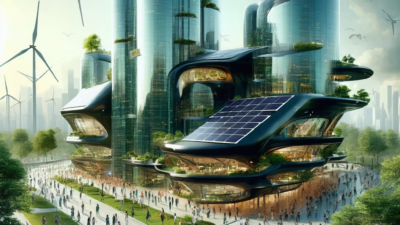Smart Homes in 2025: How Technology Has Transformed Our Living Spaces
In the blink of an eye, we’ve arrived at 2025, and the concept of a smart home has evolved beyond what most of us could have imagined just a decade ago. Today, our living spaces are not just shelters but intelligent ecosystems that adapt to our needs, making life more convenient, efficient, and enjoyable. This blog dives into the fascinating world of modern smart homes, exploring their features, benefits, and future potential.
The Evolution of Smart Homes
Smart home technology has come a long way since its inception. From basic automation systems to fully integrated living environments, each year brings new innovations. By 2025, these advancements have created homes that are not only connected but also intuitive and adaptive.
Key Features of Modern Smart Homes
- Voice-controlled devices: Systems like Amazon Alexa and Google Nest allow you to manage your home with simple voice commands. Imagine turning on lights, adjusting thermostats, or playing music just by speaking.
- AI-powered routines: These systems learn your habits and preferences, creating personalized schedules for lighting, heating, and entertainment.
- Smart security: Advanced cameras, motion sensors, and facial recognition provide robust security, allowing you to monitor and control access from anywhere.
- Energy efficiency: Smart meters and appliances optimize energy use, reducing waste and lowering bills.
The Impact on Daily Life
Living in a smart home in 2025 is more than just convenience; it’s about enhancing quality of life. These systems free up time by managing routine tasks, allowing you to focus on what truly matters. For instance:
- Morning routines: Your smart home can wake you up with soft lighting and gentle music, then prepare your coffee or tea based on your preferences.
- Entertainment systems: Seamless integration of audio-visual devices ensures an immersive experience whether you’re watching a movie or hosting a virtual gathering.
- Health monitoring: Devices track vital signs and suggest health tips, promoting a proactive approach to wellness.
The Future of Smart Homes
As technology continues to advance, the future of smart homes looks even more promising. Innovations like augmented reality interfaces and holographic displays could become mainstream by 2030, offering new ways to interact with your living space. Additionally, advancements in quantum computing may enable systems to predict and adapt to your needs even before you realize them.
Challenges and Considerations
Despite the benefits, adopting smart home technology isn’t without challenges. Issues like data privacy and cybersecurity must be addressed to ensure these systems remain safe and reliable. As we move forward, it’s crucial that innovation goes hand in hand with responsible practices.
The Bottom Line
In 2025, smart homes represent a significant leap forward in how we live, work, and relax. By integrating cutting-edge technology with everyday life, these spaces offer unparalleled convenience and comfort. As we continue to explore new possibilities, the future of living spaces is brighter—and smarter—than ever before.
Want to learn more about smart home technologies? Visit Amazon Alexa or Google Nest for insights and products that can transform your home into an intelligent ecosystem.





